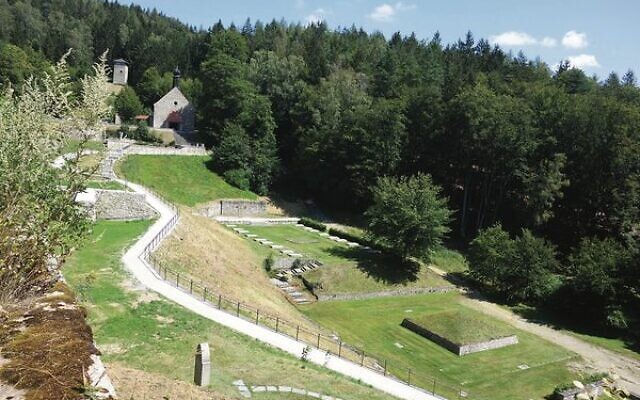Visiting researcher calls for information
That memorial now draws around 100,000 visitors annually, and Grandke aims to bring an Eastern European perspective to it.

Sarah Grandke is currently a visiting research fellow at the Sydney Jewish Museum, while undertaking a PhD on Eastern Central Europe, and the Bavarian periphery.
She will be in Sydney until at least April, and is keen to connect with individuals knowledgeable about former inmates of Flossenbürg concentration camp in Germany, or Jewish and non-Jewish displaced persons (DPs) involved in early memorial projects across Germany or Austria.
In 1938, the SS established the camp to exploit prisoner labour in local quarries. It expanded into more than 80 sub-camps, and more than 100,000 men and women were incarcerated, including over 22,700 Jews. At least 30,000 prisoners did not survive, the majority hailing from Eastern Central Europe.
Proficient in Polish and Ukrainian, Grandke explored literature and delved into the lives of about 2000 individuals connected to the Flossenbürg memorial committee. “An intriguing pattern emerged: a significant number of these non-Jewish and Jewish DPs had emigrated to Australia in the late 1940s,” she said.
Grandke was a research associate for two years at the Valley of Death Memorial in Flossenbürg.
Of that experience, she said, “Personally, Flossenbürg has been much more than a workplace; it has been a nexus for connections with survivors, descendants, colleagues, and visitors.”
That memorial now draws around 100,000 visitors annually, and Grandke aims to bring an Eastern European perspective to it.
“There was one research project done on the aftermath of Flossenbürg, but it is based on German and English sources only,” she said.
As a guide at the memorial, she was asked many questions about the Valley of Death Memorial, and its intriguing design, such as why, when it was built from 1946-47, was it adorned with a strikingly Christian design, when Jews were also incarcerated there?
Why were Polish inscriptions used alongside German and English?
And why did the memorial incorporate national symbols from Ukraine, Lithuania, Latvia, and Estonia – states that were part of the Soviet Union, and have only existed as independent countries since 1991?
These questions, her determination to discover answers and her work in European Studies, piqued her desire to solve some of the mysteries of the memorial.
She believes it is very important for the independent nationalities of the DPs to be recognised, and not under the umbrella of Poland or the Soviet Union.
Although she is German, Grandke has always been interested in Eastern Europe, and she hopes to shine a spotlight more on that perspective within the general narrative.
“That is definitely my aim, to bring more into the German consciousness, that they [many of the DPs] were Eastern Europeans.
“Collectively, this has led me to my current research on early memory activists.” Grandke said, adding, “Who were the people responsible for the early memorial, and how did their experiences before, during and after the war, shape the memorial from 1946 and beyond? And where did life take them after Flossenbürg?”
For more information, email Sarah Grandke at sgrandke@sjm.com.au

comments